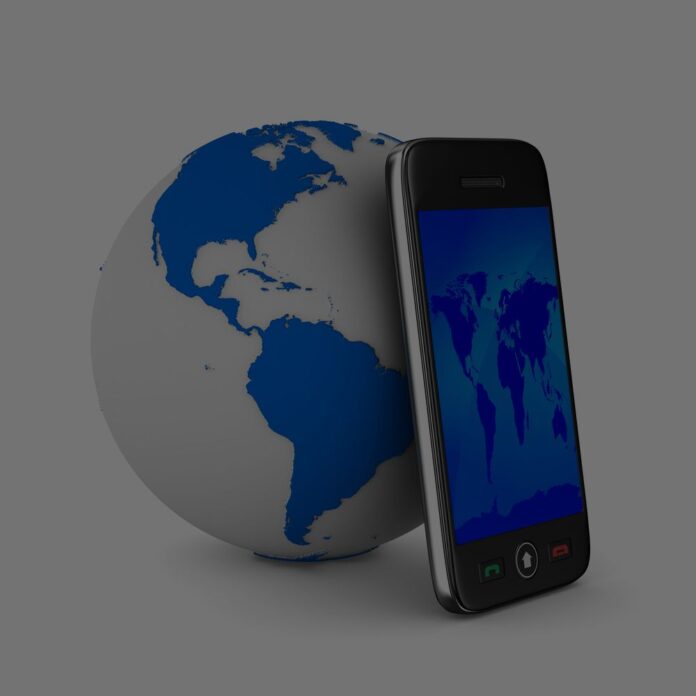In order to give their products exceptional visibility in tier 1 and tier 2 cities right once and at significantly cheaper prices, retailers are increasingly embracing an online-only strategy.
A lot of mobile firms have adopted the online-only sales strategy during the past year or two, and findings show that customers seem to like this new method.
In India, Motorola was the first company to adopt the “online-only” strategy with their then-flagship device Moto G in collaboration with Flipkart, the country’s largest e-commerce site. Few market observers anticipated the Moto G to sell out within 15 minutes of its initial introduction when Motorola first revealed this strategy. In retrospect, even if this event has been surpassed by competitors like Xiaomi and OnePlus, it will always be regarded as the start of a consumer trend that no one had foreseen.
The reasons for this model’s success are slowly emerging to the fore now that it has endured and been adopted by several brands.
Obtaining the desired audience in smaller cities
The reach that an online platform like Flipkart affords a company’s product is one very realistic explanation for why cellphone firms like Xiaomi and OnePlus have successfully entered the market through their online-only strategy. These companies can reach customers in smaller cities where the retail industry is less well-organized than it is in larger areas by implementing an online-only approach. These companies may actually provide their items unparalleled visibility in Tier 1 and Tier 2 cities straight away thanks to an online-only strategy. The fact that consumers have become more accustomed to making purchases online over time is a significant contributing reason to the success of the internet-only strategy.
Online shopping is overvalued.
Mobile brands now believe that offline purchasing is overstated as a result of increased consumer knowledge and better online shopping experiences. Nowadays, people who wish to purchase a new phone frequently compare the costs and features offered by several brands before making a choice. Compared to the constrained selection customers could find at a retail location, this procedure can be carried out most effectively online with a large selection of brands available to them.
Also, price comparison websites make it easier for consumers to compare prices and specifications online, saving them from having to visit several physical retail locations before settling on a purchase.
The capacity to regulate pricing
The ability to manage the price strategy of their products is perhaps the main reason why companies like Xiaomi, OnePlus, and even newcomers like InFocus are embracing an online-only strategy.
Mobile brands have always had to go through the time-consuming distributor-retailer cycle in order to make their product available to consumers, much like other consumer electronics products. In the conventional offline model, mobile businesses either create their own distribution network or work out a partnership with one or more well-known distributors. And this cycle becomes even more difficult if you are a foreign brand trying to get into a local market.
Building one’s own distribution network is a nuisance that most foreign brands would prefer to avoid, especially in a market with so many competitors and frequent market changes. This is primarily due to the lengthy nature of the process.
These brands can also choose to work with a nationwide distributor. The profit margin made by these national distributors from the sale of each device will ultimately drive up the cost of the product. Then the regional distributors arrive; they too must profit from the sale of each device, driving the price of the item further higher. Lastly, it is the turn of the retailers to generate a profit on each device sold. At this point, the cost of the gadget
Consider adding another Rs. 3,000–5,000, or possibly more, to the price of Xiaomi’s current flagship, the Mi4′s 16 GB edition, and it no longer sounds like a steal deal, does it? The distributor-retailer cycle can affect a device’s price in this way. Xiaomi and similar companies can afford to provide the user a good deal since their online-only business model makes this possible.
This is also the reason why the identical items can be found on different e-commerce sites at differing pricing points. Mobile companies are able to pass on the savings in pricing to the customer. Also, the e-commerce businesses are not required to hold back a margin from a sub-retailer.
A high incidence of success
Motorola sold more than a million of these smartphones as a result of their online-only marketing approach for the numerous Moto G iterations and later the Moto E. With the sales of its Mi3, Mi4, and Redmi 1s devices, Xiaomi followed suit and did well. Due to this strategy, Xiaomi is currently one of the top three smartphone brands in the world, behind only Apple and Samsung.
The Yureka was introduced earlier this year by the Micromax-owned Yu Televentures brand. For the online selling of this item, they made a partnership with the world’s largest online retailer, Amazon.
Companies like Lenovo and Xolo have also chosen to use this tactic. Lenovo has already made known its intentions to compete with Xiaomi and other online-only brands via Shenqi. Using this strategy, companies like vivo are entering the market.
The smartphone brand Xolo from Lava International has made headlines for developing its own e-commerce platform that it plans to utilise to expand the audience for a new, online-only sub-brand it is creating.
Still, not everyone should select this.
The online-only model may have numerous benefits, but it also doesn’t provide any compelling arguments for larger players to jump on board right once. Large companies like Apple Inc. are unlikely to migrate to this sales channel exclusively any time soon. They’re not required to do so. Standing in line to purchase an Apple iPhone is still very much a fan thing, and brand value is the foundation upon which Apple’s sales are built. Due to Apple’s successful marketing campaigns, transitioning to an online-only business model looks extremely unlikely.
Still, not everyone should select this.
The online-only model may have numerous benefits, but it also doesn’t provide any compelling arguments for larger players to jump on board right once. Large companies like Apple Inc. are unlikely to migrate to this sales channel exclusively any time soon. They’re not required to do so. Standing in line to purchase an Apple iPhone is still very much a fan thing, and brand value is the foundation upon which Apple’s sales are built. Due to Apple’s successful marketing campaigns, transitioning to an online-only business model looks extremely unlikely.
Samsung, a South Korean industry giant, is another. Currently, Samsung sells a sizable portion of its smartphones using the conventional strategy. It does provide exclusive deals to a small number of online retailers so that they can sell a specific Samsung smartphone through their online marketplace, but overall Samsung is a proponent of the conventional approach and has faith in this sales channel.
Others could counter that there are only two brands to choose, but the truth is that these are the top two smartphone manufacturers worldwide and the present leaders of the mobile business. The offline distributor-retailer cycle is likely to stay strong in the near future as long as they and others like them are persuaded.
Prospects for the online-only strategy in the future
It is evident that there are other variables that have contributed to the success of this sales channel even if a number of these firms have adopted this strategy. The rising use of the Internet is the first. India already has more than 300 million people online, and that number is constantly growing. Even though it is estimated that e-commerce only makes up approximately 1% of all retail sales, it nevertheless generated $5.3 billion in revenue. It goes without saying that these numbers will experience a rise in sales as the smartphone makers’ online-only strategy takes shape.
There is no doubt that in time, as more and more mobile firms choose an online-only approach, e-tailing would start to compete with traditional sales channels as a result of the increasing penetration of the Internet. Maybe not right away, but definitely!
————- ————–
“Large brands like Apple aren’t going to completely move to this sales channel anytime soon. Their business is based on brand recognition, and waiting in line to get an Apple iPhone is still very much a fan activity.





